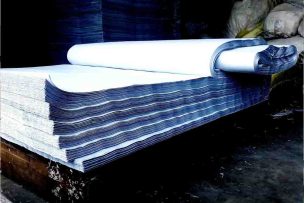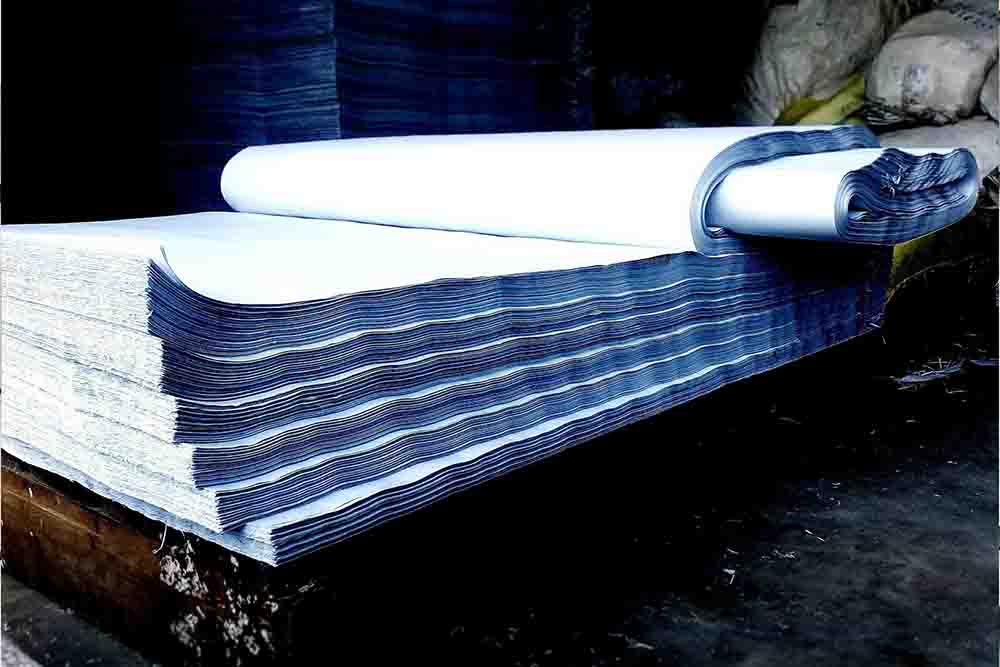Understanding the volatile paper market and what printing companies can do to keep costs down
Image by minthu via Pixabay.com
If your company operates in a vertical that relies on print services — such as publishing, education, marketing and retail, financial services, healthcare, real estate, or the automotive industries — you’ll already be aware of the rising price of paper. You may have felt the pinch and wondered just why the market has changed so rapidly and how these fluctuations in pricing and the supply chain will affect the ongoing cost of high-quality printing services. We’ll do our best to answer those questions now.
With the cost of paper soaring, custom printing services like ours are working hard to absorb the added expense and keep prices low for you, our valued customers. We understand that keeping projects on budget is vital, and while you can fall back on contingency planning to some extent, shocks in the market are always felt and their ongoing repercussions may have significant implications. But let’s look at why the cost of paper keeps going up and what we’re doing to mitigate against the increases so we can continue to offer great value printing services to all our clients around the world.
Why has the cost of paper gone up?
The reason for the sharp increase in the cost of paper products over the last several years is complex. But it may surprise you to know that it’s not to do with deforestation. In any case, good modern printers understand the importance of working toward sustainable business practices and — as we do — source their paper from FSC certified suppliers and use recycled materials wherever possible.
The cost of paper has increased so much because of collateral changes in the wider market. Rising gas and electricity costs linked to geopolitical events, limited resources, changing supply chains, the economic after-effects of the global pandemic, and shifts in the rates of production are several core factors which impact the price of paper manufacture and distribution. The chemicals used in raw paper production cost more now, and so that also contributes to rising prices. Add to these factors changes in the labor market and fluctuations in industrial relations and you have a perfect storm.
During the pandemic, many paper mills were forced to close, some of them permanently. Others switched production from fine papers to packing grade cardboard. With entire populations worldwide staying home and businesses putting on the brakes, the demand for fine paper decreased. Meanwhile, the lock downs led to a boost in e-commerce and a consequent surge in the demand for packaging materials.
Within the United States, the cost of posting and shipping has seen increases, too. It’s often cheaper now to use foreign printing services as the cumulative costs of paper, printing, and shipping are lower than domestic supply. China, for example, is a world leader both in printing technology and low-cost production with options to ship to the US by air or sea, allowing a range of options to balance speed against cost according to a client’s needs.
Understanding how paper is made
To appreciate how all the factors cited above contribute to the cost of paper production, it’s important to understand how paper is made. While other materials are used occasionally — such as cotton, straw, linen, hemp, and bamboo — most paper products are made from mainstream forestry byproducts. So, when those parts of felled trees which are useful for construction timber or for furniture grade applications have been removed, the remaining wood is used to make paper.
In the first stage of the process, the wood material is turned into a pulp. This can be done by mechanical or chemical means. Chemical pulping is the most common method deployed and is a surprisingly environmentally friendly and energy efficient process. The wood is reduced to chips — using a wood chipper much like those professional gardening services use but built on a much larger scale — and mixed in vats with chemicals which help break down the fibers. The mixture is heated to high temperatures to speed up the process. The pulp is then extracted. The chemicals are recovered and recycled to use again, while the organic waste is burned to fuel the paper plant and any excess energy can contribute to the national grid supply.
The pulp is pressed through several wet and dry stages on a huge rolling machine that flattens and compresses the fibers. The resulting paper is then dried out and rolled. Once cured, it’s cut and packaged for distribution.
As you can see — even while it’s a fairly closed and energy efficient system — a large paper mill consumes a lot of energy, water, and other products.
Are increased paper costs passed on to the consumer?
Most printing companies have been forced to pass on at least some of the cost of increasing paper prices to the customer by raising their own prices. We understand that this has a knock-on effect. Not all of our valued clients would be able to ‘pass the buck’ down the line to their own customers, and not all print products are necessarily destined for resale in any case.
For that reason, we — along with other responsible companies — have bent over backwards to absorb price increases and maintain good value for money at the point of sale. It isn’t easy and some relative increases have been unavoidable. But, by smart management and immediate interventions, we have been able to keep the prices of our custom printing services competitive in a volatile market.
How can printing companies keep costs down?
We’ve deployed several strategies to mitigate against rising paper costs and keep our printing prices low for the consumer. Among those that have worked best so far are the following:
- Increasing the scale of production
- Streamlining business processes
- Improving efficiency
- Optimizing technology
- Negotiating with suppliers
- Cutting our profit margin
According to PrintWeek, the cost of paper is set to continue to rise for the foreseeable future. Several suppliers have announced further price hikes of up to 15% which has led to a reported 3 to 5% increase in the cost of printing services across the industry. However, we can expect that the market will settle down again as the worst effects and consequences of the global pandemic begin to level off and the paper manufacturing industry moves back into a more stable state. Other factors are less predictable and need to be watched and evaluated as things continue to evolve globally.
We would also expect to see the market stabilize again toward the end of 2022 and the beginning of 2023 as new production facilities are brought on stream, temporary closures are lifted, and logistical solutions ease up.
We will continue to monitor the changing market closely and maintain a pro-active, responsive, client-centered approach to do everything possible to sustain our competitive pricing without compromising on quality, sustainability, and professional service. Whatever happens to the price of paper, you can be assured that QinPrinting strives to give you the best deals on printing products and always with our usual high-level of customer care and service.
So, if you have concerns about the impact of ongoing increases in the cost of paper on your print-necessary projects, keep calm — we’ve got your back. Get in touch with us today for an informal chat about the possibilities we can offer you and for a no-obligation quote. We’ve got decades of experience and an enthusiastic team of expert staff on hand to help. And remember, we have an unwavering commitment to offer high-quality services at competitive prices, always. It’s a fundamental aspect of our corporate ethic. Let’s talk.


